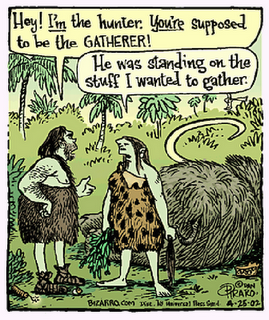Male and female creativity, is there a difference?
Let’s get real, okay? There is a difference between female and male creativity. One is not better than the other. Both are valuable, both are worthy. Both men and women have new ideas and make new decisions, and they do it in their own way. Women tend to be better in verbal fluency, while men tend to have an advantage with spatial tasks. Why would we expect the nature of their creativity to be the same?
Has gender influenced how creativity is researched?
Until recently it was men who defined and wrote about creativity according to their perceptions, influenced by their brain make up. I wonder what other questions might be researched if women were the lead investigators in the area. Again, not better, different, complimentary.
Research shows that men and women have different structures and wiring in the brain, and men and women also use their brains differently. Functional magnetic resonance imaging (fMRI) and other noninvasive scans of male and female brains suggests that gender plays a role in stress reactions, and may influence memory, hearing, vision, emotion, even how we relax.
Male brains focus on far-away targets to the exclusion of other stimuli. As primitive hunters sought to provide protein for the clan, they went after prey, tracked it, captured it, owned it. It is possible that the early creativity researchers acted in a similar ways due to the patterning of their brains. To understand and master the phenomenon, the target, they first defined it, made tests to support their theories to understand it and provided evidence of its existence, much in the same way their predecessors pursued their quarry so many millenia ago.
Women’s brains perceive with gestalt concrete awareness and reading visual cues. As did early gatherers, they scope the scenery for a broad view of their surroundings keeping in sharp awareness of their immediate context. Our primitive fore-mothers watched for signals in the children’s emotions, looked-out for potential hazards and collected nuts and berries at the same time. Their ability to multi-task has been going on forever, and for good purpose, and likely because of the structure of their brain. Qualitative research, perhaps, more so that the scientific method, might be an approach that would be a natural expression of this intelligence.
Implications
Men’s naturally logical linear abstract way of thinking influenced what is accepted as truth and right. Using their scientific approaches, if you can’t prove it, it doesn’t exist. Over the centuries women’s ways of knowing was downgraded to the status of ‘old wives tales’ because it couldn’t be heard/perceived/understood by the men. It was considered fluff, not stuff because it was different.
People are using different metrics to determine creativity such as the number of ideas generated, new products put into the marketplace and the like. Now that women are becoming more active in the field, newer questions such as happiness, employee engagement among other softer measures, are becoming factors to consider.
This clip from the film My Fair Lady shows how women used to be viewed. The tides on this old outlook are changing.
About listening and male/female voice differences
He hears her voice as music and can’t understand why it’s not plain, like his
The human brain processes the sounds of male and female voices differently, said a report of a study from the U.K.’s University of Sheffield. While people tend to hear female voices more clearly, men’s brains hear women’s voices first as music. It’s not the pitch of the woman’s voice, it’s the vibration and number of sound waves that cause this to happen.
The female voice is more complex than the male voice, due to differences in the size and shape of the vocal cords and larynx. Women have greater natural ‘melody’ in their voices. Men can hear each other because they use a much simpler brain mechanism at the back of the brain to decipher another man’s voice – they recognize it as speech. The male brain goes into overdrive trying to analyze what is being said by a woman and is challenged to understand it.
Men are valuing women’s brain processing.
As more women are occupying research positions, new questions are being asked. Men are catching on to the value of women’s way of knowing. Leadership literature stresses the positive influence of attention to emotional and relational needs as well as the tasks at hand; organizations are listing these as quality and performance enhancing competencies.
How people feel related to their willingness to do work tasks has received public attention, for example. Dan Pink recently popularized creativity motivation research findings from Teresa Amabile, among others, in his book, Drive.
It’s not surprising it would take a man to make this intelligence real. Daniel Goleman, author of Emotional Intelligence, accomplished the same end. Women inherently know that emotions matter, still, for these to be recognized as valuable, a man had to say so. Intuition is another subject that will soon boom in the marketplace as more research is done. The old wives tales, once scoffed at, are being redefined as insights into other ways of knowing now that proof is becoming available through neurological research and as more women enter the fray.
Conclusion
Men and women are alike and different in many ways. We are dynamic systems steered by physiological make up that includes brain structure, hormones and reproductive contributions.
Men and women perceive differently, respond to stress differently, suffer heart attacks differently. Why wouldn’t we also consider that how we approach, understand and express our creativity may be alike and different as well?
Perhaps the challenge is in how creativity is defined. Is it possible that there are gender differences in its perception as well? And is it possible that traditional research methods may not get at the uniqueness’s?
References
Understanding Men, Women’s Health Magazine
The Alphabet vs. the Goddess, Leonard Shlain, referenced in blogpost When Leading Innovation Does the Male/Female Ratio Count?
Drive, Dan Pink (make sure to read the reviews to see how astounded people are at reading about what women have always known and has been drummed out of their language over the years) You can see his online talk about it here.
Characteristics and Problems of the Gifted: neural propagation depth and flow motivation as a model of intelligence and creativity, Francis Heylighen
Amabile, T.M., Barsade, S., Mueller, J., & Staw, B. (2005). “Emotion and Creativity at Work”, Administrative Science Quarterly, September, excerpted in Rotman Magazine, Spring/Summer 2006, 39-43.
Hunter versus Gatherer: Gender Differences on the Mind, Whitney Hopkins, Fast Company, Sept 22, 2009.
Men are From Mars, Neuroscientists Find That Men And Women Respond Differently To Stress, Science Daily, April 1, 2008.
Related Articles
- Male and female ability differences down to socialisation, not genetics (guardian.co.uk)
- Five Magic Days to Sell (to Women) (neurosciencemarketing.com)
- Sexy Women are Seen as Objects, Studies Find (psychologytoday.com)
- Neuroscience or ‘Neurosexism’? Book claims brain scans sell sexes short – USA Today (usatoday.com)
- Why Gender Neurology Matters in Political Decision Making – Huffingtonpost.com (huffingtonpost.com)





Thank you, Marci, for a very thought provoking post on why we need the combination of both female and male brains, whether that be on problem solving, creativity or anything else. Since we are all gifted differently, along with unique background and experience, would you agree that many males have great verbal creativity, too, and many women are highly talented spatially. These folks are the “Outliers” to whom Malcomb Gladwell refers in his recent book by that name.
I can see that writing a post of this nature could indeed become too “hot” to handle. You have completed an extremely thoughtful post.
Thanks for new insights.
Robyn
Robyn, thanks for your comment. Yes, this post was written on a theoretical level with broad sweeping generalizations that do not, as you mention, take individual differences and talents into account. There no intention to pigeon-hole or stereotype female and male capabilities, only to highlight general gender specific orientations.